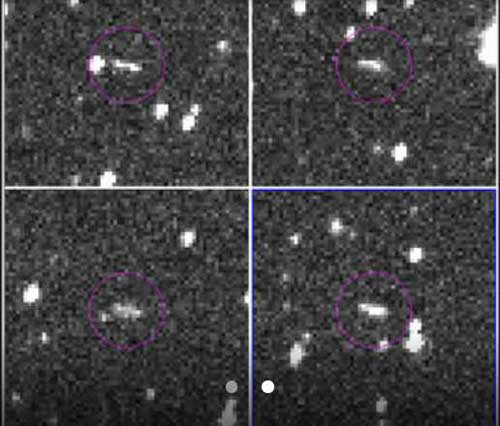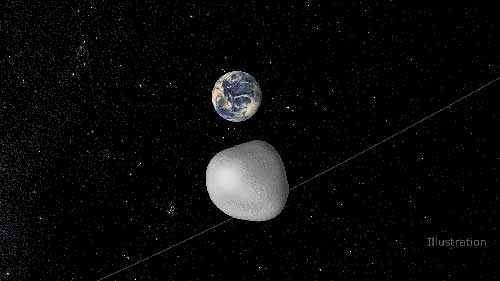An asteroid about 25 feet (8 meters) across will safely pass Earth at about 1:21 p.m. PST (4:21 p.m. EST) today, March 6, approaching us six times closer than the moon.
This distance, though not unusual, is closer than the Earth flyby of a larger asteroid on Wednesday afternoon, March 5.
This afternoon’s flyby object, asteroid 2014 EC, was discovered on March 5 by the Catalina Sky Survey near Tucson, Ariz. Its closest-approach distance, about 38,300 miles (61,600 kilometers), is between four and five Earth-diameters away from our home planet. It will not be visible to the unaided eye.
“This is not an unusual event,” said Paul Chodas, a senior scientist in the Near-Earth Object Program Office at NASA’s Jet Propulsion Laboratory, Pasadena, Calif. “Objects of this size pass this close to the Earth several times every year.”
A larger asteroid’s flyby on Wednesday afternoon came within about nine-tenths of the distance to the moon. That asteroid, named 2014 DX110, is about 100 feet (30 meters) across. A third asteroid, 2014 EF, which is closer in size to today’s 2014 EC, passed Earth at about 7 p.m. PST (10 p.m. EST) Wednesday, with closest approach about twice as far from Earth as 2014 EC’s closest approach.
NASA detects, tracks and characterizes asteroids and comets using both ground- and space-based telescopes. The Near-Earth Object Observations Program, for which the asteroid-watching portion is commonly called “Spaceguard,” discovers these objects, characterizes a subset of them and identifies their close approaches to determine if any could be potentially hazardous to our planet.
JPL manages the Near-Earth Object Program Office for NASA’s Science Mission Directorate in Washington. JPL is a division of the California Institute of Technology in Pasadena.
More information about asteroids and near-Earth objects is at: https://www.jpl.nasa.gov/asteroidwatch.
Source: NASA Jet Propulsion Laboratory








